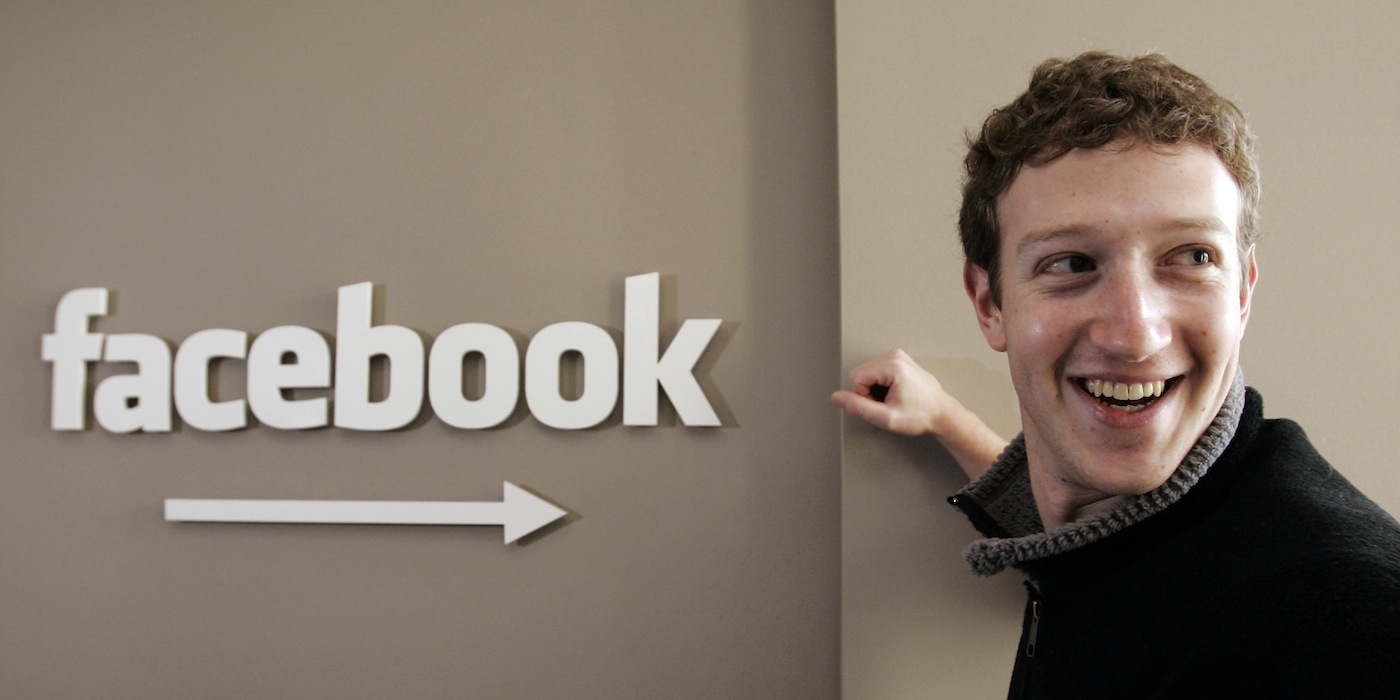Chapter 14
Going Social and Paying to Play

There was something called the worldwide financial collapse in 2008 which forced a lot of issues. Like everyone, we had to make cuts here, we had to make consolidations. It also happened to be the right time to manage the brand in a consolidated way.
But lest we make you feel that this was a simple and non-confrontational time, and particularly when [chief product officer] Lewis [DVorkin] got here and began to change how we were gathering and distributing and creating content, there was a lot of — I hope you don’t mind me saying — there was a lot of, “Are you in, or are you out? Are you on board with the new way of doing things, or are you going to go somewhere else?”
The financial collapse also affected the startup entrepreneurs, but this time the broader context of the last bust provided a framework for operating successfully in a downturn. They weren’t new at this any more.
How did [Gawker Media] grow?
Consistently. Even after 2008, where I actually cut the costs by 35 percent. Within three weeks of Lehman [Bros.] going down — I’d been so scarred by the dot-com bust that there was no way it was ever going to happen to us. We were not going to hold on with loss-making ventures. In business terms, that was probably the biggest interruption, except that there was no interruption in sales growth. We rationalized our titles. We’d always been pretty ruthless about getting rid of things that weren’t working. Once you fire your first editor-in-chief, once you close down your first unsuccessful site, then subsequent actions become par for the course. If we were to do it now, people wouldn’t think, “Gawker’s in trouble.” They’d think, “That’s just Gawker doing what Gawker does. It’s a relatively ruthless organization.”
Platforms for individual expression and interaction had come and gone since the advent of the web. Initially, these were static 1.0 services like Geocities and Tripod that allowed users to create their own “walled garden” homepages. These businesses were mostly acquired during the dot-com boom by the portals (Geocities by Yahoo and Tripod by Lycos), in some cases, for billions of dollars.
The next generation of social networks began in 2002 with the launch of Friendster and, the next, year, Tribe. Founded by Mark Pincus (who would later create the online gaming company Zynga), Tribe was focused more on the connections among people — groups. Once again, the newspaper industry tried to harness the new technology, this time to save classified advertising. Both the Washington Post Company and Knight Ridder invested in Tribe with the hopes of it becoming a kind of next-generation Craigslist. The theory was that people would tend to buy things from their social circles rather than anonymous Craigslist sellers. It failed, and over the horizon came Myspace — originally popularized as a place to talk about favorite bands — as the next ascendant social media phenomenon.
In 2005, Rupert Murdoch’s NewsCorp acquired Myspace for $580 million, and was suddenly viewed as having made the most brilliant deal by a legacy media company in Internet history. It was such a great deal that Sumner Redstone fired Tom Freston as CEO of Viacom for not making it. That’s how hungry the moguls were to steal a march on this social media phenomenon.
For a while usage of the site boomed. But then aspiring computer engineer Mark Zuckerberg went to Harvard and in his dorm room started a little proprietary network at first just within Harvard, initially to “rate” dating prospects. That, of course, was Facebook, and if you don’t know that story go see the movie The Social Network.
Chris Cox, Facebook’s vice president of product, describes the idea of the “the social graph,” the key underlying concept behind the company. He recounts a part of his 2005 job interview with then vice president of engineering Dustin Moskovitz and chief technology officer Adam D’Angelo.
They described to me this idea that Facebook was the seed of a collaboratively created directory of people. At that time, Facebook had around five million users, so the idea that it was this seed of something that could grow to actually be really, really big, but that had the property that each member of that network was creating their own projection. So, it was a collaboratively built directory and it was interconnected. Each person was connecting to their real-life friends.
That was a new idea to the extent that the rest of the networks that had existed on the Internet didn’t have the property that people tended to be themselves and tended to connect with people that they really knew in life.
But if you had a seed that had that property that was strong and engaged, it was actually growing and could become something really, really exciting, which they were calling “the social graph” — this idea of a collaboratively built directory of everybody in the world, where each person was responsible for their own entry in that directory.
They had that vision in 2005?
They did. We weren’t sure whether to call it “the social graph” or whether to call it something else. There was a bunch of debate internally around what to call it, but the key thing they did have was the word “the,” which was important because it meant that the idea was to reflect something that was a reality that had just never been mapped out. That was a powerful idea, for me, as a [Stanford University engineering] graduate student, once I wrapped my head around it. Then, if you could imagine that existing, there’s this directory that you’re in, and your mom is in, and your sister is in, and your brother is in, and your roommate is in, and your college professor, all the way up to Barack Obama and John Boehner, and all of the public figures in the world — Beyoncé and influencers in every different category.
If you could imagine a world where every one of those people had an entry, and every one of those people were connected to the set of people in the world that interested them, you had the underpinnings of a circulatory system that could be a publishing platform, where each person was receiving updates from the set of people that interested them, all the way down to their cousin and all the way up to the president of the United States.
That publishing system they called “Feed,” and my job interview was, “How would you come in here and help us build Feed?” Feed was to take the homepage, which at that point told you how many friend requests you had, and turn it into “this living newspaper” and these were the words that they were using.
Now, with more than one billion users globally, Facebook has redefined the whole concept of audience “reach” in which both publishers and even the big portals would proudly tout unique visitors in the 20 to 50 to 150 million-user range.
Around the same time that Mark Zuckerberg and his team were beginning to build “this living newspaper,” a group of entrepreneurs, including Blogger founder Evan Williams, created Twitter. The other members of the team, Jack Dorsey, Biz Stone, and Noah Glass, had worked together at Odeo, an early podcasting company. Seven years later, Twitter’s 140-character “tweets” are a preferred method for reporting and receiving “news” by both individuals and institutions like The Wall Street Journal, The New York Times, and Time magazine. Twitter, according to CEO Dick Costolo, is the global meeting spot. What’s quickly reported in one place and tweeted out may not always be accurate, as CBS newsman Scott Pelley noted after the tragic school shootings in Newtown, Connecticut, but it’s where more and more of us are going first to hear news — as well as gossip.
My perspective is that we’re building this global town square. What I mean by that is, if you went back to Ancient Greece, the way that news and information was passed around was, you went to the Agora after lunch in the town square.
There was this unfiltered, multi-directional exchange of information. I might go into the Agora and say to Martin, “Hey, my aunt died.” Martin might say, “Euripides’ goat passed away.” We would exchange some information.
By the way, the politicians were there. The musicians were there, et cetera. There was this multi-directional, unfiltered exchange of information, which was interesting in all sorts of ways.
[The] advent of technologies…made it easier to distribute news, geographically and with less friction in time, starting with the printing press, then radio, broadcast television, cable, on and on. It was always in service to a broader geographic distribution and less delay in time, but at the expense of losing the multi-directional aspect of it. It became more and more one way. And losing the unfiltered aspect of it. It became more and more here’s what’s going on from the very few of us to the very, very many of you.
In fact, if you go back to the election — talking about the campaign — if you go back to the campaign eight years ago, there would be a debate. Then CNN would say, “Now, we’re going to go to Frank Luntz, who’s back here in the room with six people, and Frank’s going to tell you exactly what to think or what everyone in the room thinks about what happened tonight.” But it wasn’t. It’s Frank telling you what he thought happened tonight and what these six people said.
Along comes Twitter, and it’s got all the benefits of broadcast distribution. It’s got immediacy. The information is transmitted around the world in absolutely real time. It’s got obviously the breadth of geographic distribution but all the benefits of the Agora. It’s multi-directional. The president’s talking to me, but I’m talking back to the president. CNN is broadcasting the debate, and I’m saying, “I don’t think he answered that question.”
It’s certainly unfiltered. You don’t have to go to the broadcaster any more, during the basketball game or after the basketball game. You go to LeBron [James], and LeBron goes to you.
That has been why we’re seeing the [political] campaigns unfold on Twitter. There’s no more, “Now let’s go to Frank Luntz to see what people thought about that question 20 minutes ago,” because as the question happens, people are typing into Twitter, “I thought he dodged that question.” We already all know what we all thought about the answer.
As Google and the emerging social networks took an ever-increasing part of the advertising pie, news entrepreneurs recognized the dual dilemma of creating something that would both fit into the new distribution reality, and be sized to the realities of the new marketplace. Scott Kurnit, the founder of About.com (which was sold to Primedia in 2000 for $690 million, to the New York Times Company in 2005 for approximately $400 million, and then sold again to IAC in 2012 for $300 million), describes the challenge.
What we haven’t seen happen successfully in news is professional journalism matched with crowdsourcing, with proper curation. We see on Twitter, when the plane goes down on the Hudson, it’s first reported, and then the conventional news outlets pick that up….We see The Huffington Post has been successful, I think, with a modified model, both in terms of massive amounts of user input from commenting, and also blogging as interesting fodder. But they’re not The New York Times. The question is, as we look at the likes of The New York Times and the Time magazines, as they go forward, they can’t keep doing what they’re doing. The model doesn’t work. There’s less revenue in digital than there is in the old media and that’s not an anomaly. That’s real. That’s going to continue, so they have to lower cost structure. How do you lower cost structure? Well, you introduce, I think, people with passion who don’t do it for the money. They do it because they love it.
I think that the blend of professionalism and passion and curation will become, and is becoming, the new source. I do worry about news that is just incorrect….You never know if a quote’s real or not on the Internet, and that’s a problem. So how do “We the People” thumb it up or share it appropriately to create enough of a filter so that we know that it’s real? I don’t think we’ve achieved that yet. I still think there’s…more voices for sure, but the ultimate news product is still in front of us.
One company attempting to create a news service for the social age is BuzzFeed, founded as an experiment by Jonah Peretti when he was still at The Huffington Post. Peretti sees benefits in an increasingly social news environment.
So I guess you think we’re at the beginning of something?
I think that you had an era where portals were dominant, an era where search was dominant. Now we’re at the beginning of an era where social is dominant. So digital feels old and has been around for a while. But social, to me, seems like it has more potential both to create new, interesting kinds of monetization and also to be a friend of original reporting in journalism. Googlebot is dumb and will aggregate the page that has the most keywords that it seems the most relevant to…but it doesn’t know that that’s not the original piece, or the authoritative piece. Whereas on Twitter, nobody is going to retweet that piece, no one is going to share that piece….
People will retweet the Ben Smith scoop or the [Michael] Hastings scoop. They’re not going to retweet the rewrite of it. I think that actually makes the reporters that we’ve hired…. They pull their own weight in terms of traffic because of the social web.
Still, to Kurnit’s point, there is the tricky problem of cost structure. Many of the news entrepreneurs we spoke with addressed this issue, and most did so by suggesting that some combination of tweeting, blogging, and crowdsourcing would complement a much smaller newsroom. Henry Blodget, for example, makes the case that in a social media age you do not necessarily need reporters on the ground when ordinary citizens are already there.
Marty Baron, executive editor of The Washington Post, offers a different view — with passion.
There may be instances where that works. Even if you have a train wreck, you’re going to get a lot of tweets from people saying, “I was just on the train and it crashed.” Who’s going to explain to you why it crashed? What were the circumstances? Nobody’s blogging on that. Nobody’s blogging on whether the person who was the conductor of the train was on drugs, or drunk, or fell asleep at the wheel, or anything like that.
They don’t know. They have no information about any of that. They have no information about whether the tracks were in proper condition. They have no information about whether the train was properly maintained.
They can’t tweet about that. There’s nobody blogging about it. None of the engineers who worked for the Transportation Authority are blogging that “Hey, guess what? We haven’t been maintaining those tracks.”
The notion that all information is known, but it’s not necessarily available and it’s not put together in any coherent way for anybody to possibly understand.
We just did a story here about the governor of Virginia who has a highly unusual relationship with a very unusual company that’s putting out a dietary supplement essentially. It’s not clear that it has medical benefits, although some are being claimed. This company gave the governor, actually has paid for $15,000 of the wedding of his daughter. The governor’s daughter isn’t going to blog on that. The donor isn’t going to blog on that. The governor himself doesn’t plan to blog on that. The caterer didn’t blog on that. Nobody blogged on that. Where did that information come from? Through the efforts of our own reporters.
The Boston Globe just completed a series about the taxi business in Boston, and all the abuses that take place there, how the drivers are exploited essentially. Taxi drivers can’t blog on that because they won’t get another gig. The owners aren’t going to blog on that because they won’t get another gig. Nobody’s sending out tweets about any of that sort of stuff. The only thing that gets sent out on Twitter about that is if somebody had a bad cab ride. There’s a limit to the kind of information that becomes available because of blogs and because of tweets.
We have to be realistic about that.
Yet as the economy emerged from the Great Recession — and all the ascendant forms of distribution and advertising became more and more dominant — simple arithmetic dictated to the traditional news providers that they would have to continue to reduce costs while layering in additional revenue streams. For large general news sites — notably The New York Times — this was a serious change. There was little precedent for readers paying for general news content online. Moreover, at the largest newspaper-owned websites like nytimes.com, there was concern that a pay model would significantly erode the audience and accompanying advertising revenue that had been garnered over the past 15 years.
Ultimately, The Times decided to implement a “metered model” for its suite of digital products in 2011. Martin Nisenholtz, who was on the team that evaluated that decision, explains the basic model.
It’s very simple. The idea is that users get up to a certain number of pages per month for free. I think we started at 20. I think the meter is now at 10. That allows you to provide this massive sampling of content to tens of millions of people each month. It also provides inventory and reach for your advertising business. From the side doors, by that I mean companies like Facebook, Twitter, Google, etc., you can go to a search and get again, an article for free or if somebody wants to share an article, they don’t have to send you an article that you’re going to hit a wall on. It’s a very easy and friendly way of dealing with content on a global web.
If you hit that number, what happens?
Once you hit that number…before you hit that number, you’re told by the system that you’re about to hit the number and hopefully you’ll subscribe at that point. Once you hit the number, then you’re unable to see any more content until the first of the next month. You’ve used your quota. Then you come back and on the first of the month, get a new meter. In essence, the meter is reset.
At least in 2013, what’s the result? Some of that’s been publicly reported.
A lot of it’s been publicly reported. The result has been, I think, stellar. It’s certainly exceeded, I think, The Times’ expectations of what would happen along essentially three dimensions. Dimension one is the number of subscribers. [As of mid 2013, the company reported nearly 700,000 digital subscribers to New York Times digital products, an increase of 35 percent year over year.] I think by anybody’s calculus, the number of subscribers is positive.
Secondly, we thought that it would diminish the advertising inventory more than it has, so more free users are coming than we expected.
Third, there was some thought that there would be a migration out of print and into the web faster because of the price differential, and that hasn’t happened. It’s actually been additive in some ways to the print side.
I think the model has been a success pretty much along mostly every dimension that you can think of. That’s why, I think, you’ve seen so many other newspapers take a whack at implementing this model. I think, at last count, there was something like 400 or 450 newspapers in the U.S. pursuing a metered model.
The Times did not invent the metered model. It was pioneered by The Financial Times and has been successful there, as well. It was unlike the original paywall model, adopted by The Wall Street Journal back in the early days of the web, because metered sites allow casual users and aggregators to access a limited number of stories per month without paying. Rob Grimshaw, who manages the FT’s digital business, discussed the applicability of today’s metered model to general news businesses.
It’s an interesting debate. I think we do have some unique advantages. We are very niche. I think we have a very clear position in the marketplace and a relatively defendable position in the marketplace. I think we, probably, have an easier job of carving out our position in the marketplace than, say, a general news publisher because there’s just more competition for that space. However, what I’ve seen over time is an evolution of this discussion.
When we first came out and said that we’re doing this, and this is going to be the focus of a web business, everyone said that there’s no way you’ll ever be able to do it, nobody can do [subscriptions] online, forget about it.
When we were successful, the argument changed to, “You can do it, but nobody else could do it. A general news publisher could never do that.”
Then, The New York Times comes out and does it. The argument changes, again, to, “The FT and The New York Times can do it, but they’re quality publishers, so they can do it but nobody else could ever do it.” Now, you’ve got what, 1,000 publishers across the States, 1,000 titles across the States that are charging?
That begs the following question: Where are you today? Just explain your economics sitting here in April 2013, and then we’ll triangulate that with where some of the others might be.
If you look at the FT as a whole, about 35 percent of our revenues come from digital now, which is something that we feel is a real achievement. Our thinking is that we need to get to about 50 percent digital revenues in order to be secure in the long term, to guarantee the future of the brand. But, we can see that on the horizon. We know what steps we need to take to get there. There is also another key aspect that we look at, and that’s the balance between advertising revenues and content revenues. In those terms, it’s about 50/50 now. This year we expect over 50 percent of the revenue for the organization to come from content as opposed to ads.
Just to give you an illustration of how massive a shift that is, in 2001 over 80 percent of the revenue for the FT came from print advertising. It’s a huge transformation. If you look at the digital business right now, FT.com, last year, made more than 50 percent of its revenues from subscriptions.
An almost identical dynamic has taken place at The New York Times in the wake of the metered model.
There are going to be a whole variety of different models. Some of them are going to have longer glide paths than others. Bloomberg has one model. ProPublica has another model. Thomson Reuters has a third. We have ours. You’re just going to have to keep on testing and learning. When I came here, roughly 80 percent of our revenue was advertising, 20 percent was circulation. Roughly. It’s now 50/50. Circulation revenue, print and digital, is clearly the growth area, as we adapt to the new digital advertising environment….
As Sulzberger notes, the news business today is still very much in a state of transition, both in terms of how it gathers and distributes the news, as well as how it preserves a sustainable, profitable business model. If the recounting of the last 35 years proves nothing else beyond a doubt, it is that the march of technological innovation around information is not going to slow or find some comfortable resting place. If anything, it is likely to quicken.
The core problem that the Internet has [caused for the news business] is that it has attacked, if you will, the union of the distribution and the editorial. There will be a new set of startups…which attempt to do news reading and news aggregation. Maybe some of them will become the dominant players there.
…Most of the arguments that I’ve heard are based on emotion, not rational analysis. So it’s helpful to start doing the math. The fact of the matter is that in an always-connected world, the audience of three, four, five billion — they’re not going to be paywall subscribers. If they’re going to see your content, they’re going to do it for free. You’ll have to come up with an advertising model that supports that. Ideally, working with Google and others. As we develop better advertising models, better targeted, there will be more money in that space. If your goal, as an editorial institution, is to cover everyone it’s not going to be paywall based. It’s important that this is your decision, not anyone else’s. You’ve got a choice of whether you want to use a paywall or not.
A reasonable prediction is organizations [that] had good subscription models, which include all of the major media institutions, will substitute those for paywalls. It’s a reasonable presumption. Why? They have strong subscribers. They understand how to run that business. It’s consistent with their model and a good choice.
Which brings us to the present — and beyond.




